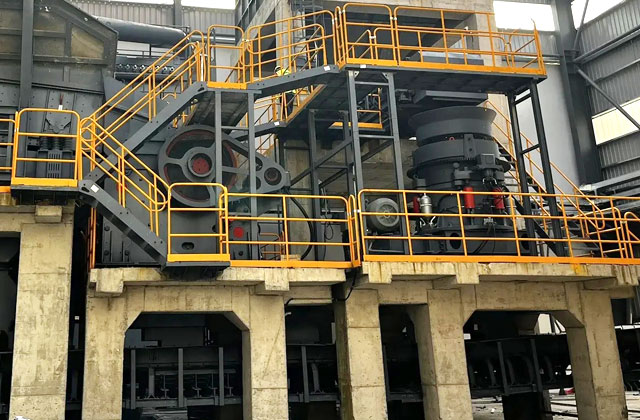Limestone quarries are essential to various industries, and crushers play a critical role in breaking down limestone into smaller, more manageable sizes. The most commonly used crushers in limestone quarries include jaw crushers, impact crushers, and cone crushers, each serving a specific purpose depending on the required output and application. Here’s a detailed look at these crushers and why they are commonly used in limestone quarries.

Jaw Crushers
The jaw crusher is one of the most widely used crushers in limestone quarries. It is ideal for primary crushing applications where large chunks of limestone need to be reduced to smaller sizes. Jaw crushers work by applying a compressive force between two jaws—one stationary and one moving. The material is fed into the crushing chamber, where it is broken down as it is squeezed between the jaws. This process ensures a high reduction ratio, making jaw crushers ideal for primary stage crushing.
Advantages:
- High Reduction Ratio: Jaw crushers are capable of breaking down large lumps of limestone into smaller sizes.
- Versatility: They can be used in various stages of the crushing process, from primary to secondary crushing.
- Durability: Jaw crushers are robust and designed to handle the abrasive nature of limestone.
Impact Crushers
Impact crushers are widely used in limestone quarries, especially in secondary or tertiary crushing stages. They work by utilizing high-speed impact forces to break down limestone. These crushers have a series of rotating hammers or bars that strike the material, causing it to fracture. As the limestone pieces collide with the impact plates, they break into smaller pieces.
Advantages:
- High Efficiency: Impact crushers can produce smaller, more uniform product sizes, making them ideal for applications requiring a more refined output.
- Low Energy Consumption: These crushers typically use less energy compared to other crushers, which can help reduce operational costs.
- Ability to Process Variably Sized Materials: Impact crushers are effective at handling materials of various sizes and hardness levels.
Cone Crushers
Cone crushers are another common choice in limestone quarries, especially when a high reduction ratio and finer output are required. They are primarily used for secondary and tertiary crushing stages. A cone crusher uses a rotating cone-shaped mantle that crushes the limestone against a concave surface. The material is crushed as it moves through the chamber, gradually reducing in size.
Advantages:
- High Reduction Ratio: Cone crushers can produce a finer product, making them ideal for producing materials for high-quality aggregates.
- Good for Hard Materials: They are well-suited for materials that are harder or more abrasive, like certain types of limestone.
- Efficient Use of Power: Cone crushers are designed to use power efficiently, reducing energy consumption.
Other Crushers
Other crushers used in limestone quarries include vertical shaft impact (VSI) crushers and hammer crushers. VSI crushers are used to produce high-quality crushed sand and fine aggregates, while hammer crushers are typically used for softer grades of limestone or in operations where only a rough reduction in size is required.
Choosing the right limestone quarry crusher depends on factors like the desired output size, hardness of the limestone, and budget. Jaw crushers, impact crushers, and cone crushers are the most commonly used machines in limestone quarries due to their efficiency and ability to handle varying conditions. While jaw crushers are essential for primary crushing, impact and cone crushers are employed for secondary and tertiary stages, providing a range of outputs suitable for different applications in construction, cement manufacturing, and other industries.

